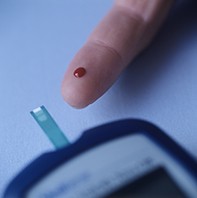Self-blood glucose monitoring: what it can and can’t tell you
Self-monitoring of blood glucose levels by patients with type 2 diabetes can help both doctors and patients review glycaemic control and identify ways to improve it. Blood glucose monitoring, however, has several limitations, notably inaccuracy and variability. Ways to measure and minimise these limitations are discussed.
Both the International Diabetes Federation and the National Health and Medical Research Council recommend individualising self-monitoring of blood glucose (self-blood glucose monitoring, or self-BGM) for patients with type 2 diabetes. This monitoring can be of considerable help in reviewing glycaemic control and in identifying ways to improve it. This article reviews the strengths and limitations of self-BGM and presents a case illustrating its use in clinical practice. An accompanying patient handout titled ‘Blood glucose monitoring: a user’s guide’ provides advice for people with type 2 diabetes about monitoring their blood glucose levels.
Picture credit: © Cristina Pedrazzini/SPL.

